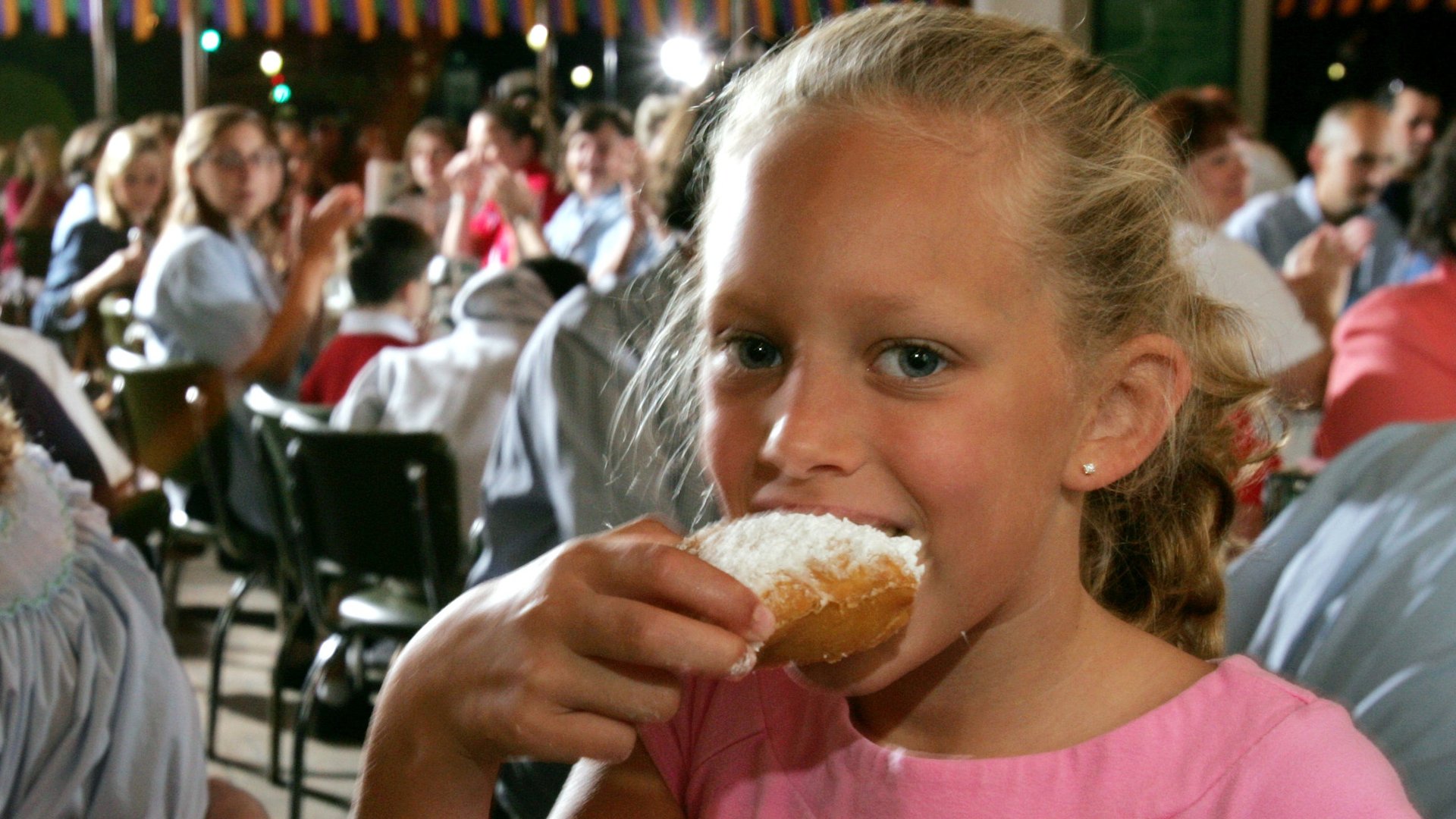Which of the world’s fried doughs is the best fried dough?
Just imagining faworki makes me crave them. Faworki are the Polish version of the “angel wings” eaten across Europe on Fat Tuesday, prior to Lent—thin ribbons of twisted dough, made crisp from frying them in oil and sweet with a dusting of powdered sugar.


Just imagining faworki makes me crave them. Faworki are the Polish version of the “angel wings” eaten across Europe on Fat Tuesday, prior to Lent—thin ribbons of twisted dough, made crisp from frying them in oil and sweet with a dusting of powdered sugar.
Faworki are cousins to beignets—fried pillows of soft, yeasted dough, served alongside chicory coffee at New Orleans’ famous Café du Monde. Beignets are the siblings of doughnuts. Which are related to zeppole. Which are the in-laws of sopaipilla.
Frying dough in oil dates back to ancient Egypt. Societies that grew grain gained access to sugar via trade routes. Cooking was elevated by the arrival of oil and animal fat. And then cultures layered on their own traditions, creating a continuum of shapes: long beveled spirals for churros, swirled stacked piles like jalebi, squiggled flat messes like funnel cake.
All so delicious. Which one is best? At Quartz, I posed that question on our office chat, Slack, and a near-riot ensued as my colleagues rushed to proclaim their favorite fried dough. Who knew there were so many decadent permutations? Have you heard, for instance, of this thing they do in Quebec called grands-pères dans le sirop d’érable, where they actually boil the dough in maple syrup? What?
In the US, we think of fried dough as a cheap-and-guilty pleasure, something we eat in the summer after riding the ferris wheel at the county fair. But this low-brow deliciousness was at one point an indulgence reserved for the very rich, and is still a luxurious treat in much of the world. Why? “Because oil is expensive.” Sarah Lohman, food historian and author of Eight Flavors, explained to me “Only cultures that had aristocracy with money to burn had food that was that hyper-delicious.”
While it may have been a fancy food reserved for feasting, the mere mention of fried dough plugs into some primal part of our brains. According to Lohman, this happens, because on a purely physiological level we’re attracted to sweets and carbs. In early human history carbohydrates were rare. They came only from fruit and honey. As they are a dense, caloric food, she explained “Carbohydrates equal survival. They still trigger that evolutionary response.”
So naturally, we attach fried foods to celebration: Oliebollen with currants or sultanas for New Year’s; jelly or jam in sufganiyot for Hanukah; frittelle during the month of Carnivale in Venice.
To settle the debate at Quartz, we made a list of 10 of our favorites. How would you rank them? Click to see how your choices compare.
The ranking poll is now closed.
There are so many we couldn’t include all of them. But that lengthy list and the possibilities it presents are something in-and-of-itself to celebrate. Break out the elephant ears!